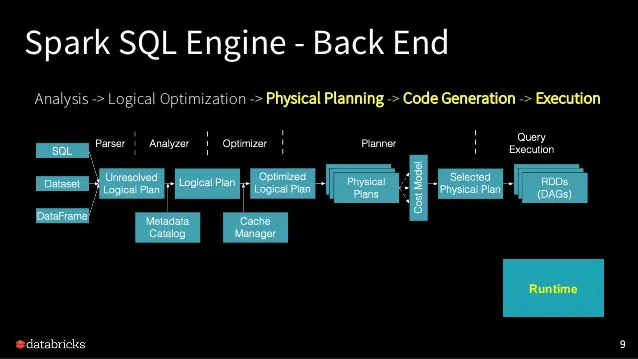Join operations are often used in a typical data analytics flow in order to correlate two data sets. Apache Spark, being a unified analytics engine, has also provided a solid foundation to execute a wide variety of Join scenarios.
At a very high level, Join operates on two input data sets and the operation works by matching each of the data records belonging to one of the input data sets with every other data record belonging to another input data set. On finding a match or a non-match (as per a given condition), the Join operation could either output an individual record, being matched, from either of the two data sets or a Joined record. The joined record basically represents the combination of individual records, being matched, from both the data sets.
Important Aspects of Join Operation
Let us now understand the three important aspects that affect the execution of Join operation in Apache Spark. These are:
1) Size of the Input Data sets: The size of the input data sets directly affects the execution efficiency and reliability of the Join operation. Also, the comparative sizing of the input data sets affects the selection of the Join mechanism which could further affect the efficiency and reliability of the Join mechanism.
2) The Join Condition: Condition or the clause on the basis of which the input data sets are being joined is termed as Join Condition. The condition typically involves logical comparison(s) between attributes belonging to the input data sets. Based on the Join condition, Joins are classified into two broad categories, Equi Join and Non-Equi Joins.
- Equi Joins involves either one equality condition or multiple equality conditions that need to be satisfied simultaneously. Each equality condition being applied between the attributes from the two input data sets. For example, (A.x == B.x) or ((A.x == B.x) and (A.y == B.y)) are the two examples of Equi Join conditions on the x, y attributes of the two input data sets, A and B, participating in a Join operation.
- Non-Equi Joins do not involve equality conditions. However, they may allow for multiple equality conditions that must not be satisfied simultaneously. For example, (A.x < B.x) or ((A.x == B.x) or (A.y == B.y)) are the two examples of Non-Equi Join conditions on the x, y attributes of the two input data sets, A and B, participating in a Join operation.
3) The Join type: The Join type affects the outcome of the Join operation after the Join condition is applied between the records of the input data sets. Here is the broad classification of the various Join types:
Inner Join: Inner Join outputs only the matched Joined records (on the Join condition) from the input data sets.
Outer Join: Outer Join outputs, in addition to matched Joined records, also outputs the non-matched records. Outer Join is further classified into the left, right, and full outer Joins based on the choice of the input data set(s) for outputting the non-matched records.
Semi Join: Semi Join outputs the individual record belonging to only one of the two input datasets, either on a matched or non-matched instance. If the record, belonging to one of the input datasets, is outputted on a non-matched instance, Semi Join is also called as Anti Join.
Cross Join: Cross Join outputs all Joined records that are possible by combining each record from one input data set with every record of the other input data set.
Based on the above three important aspects of the Join execution, Apache Spark chooses the right mechanism to execute the Join.
#big data #hadoop #data science #data analytics #apache spark #hive #etl #machine learning & # ai #parallel programming
